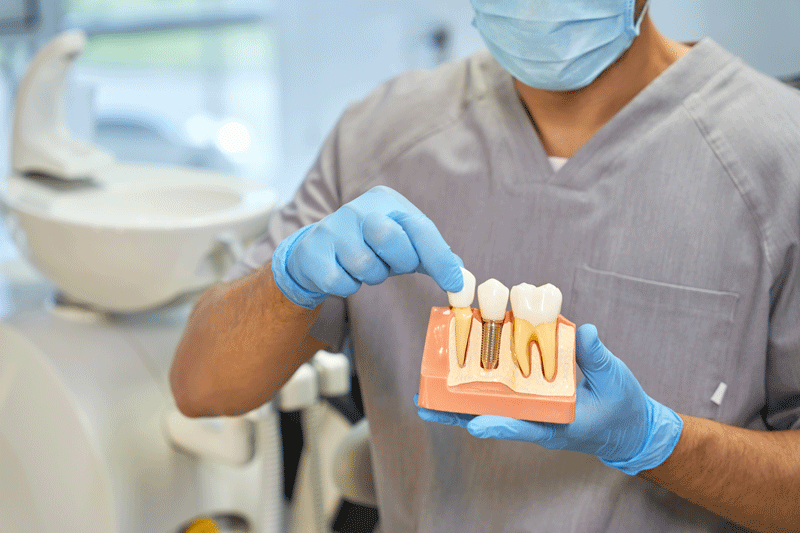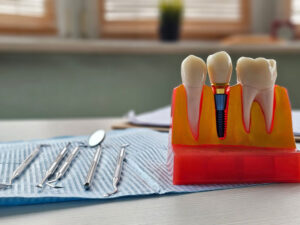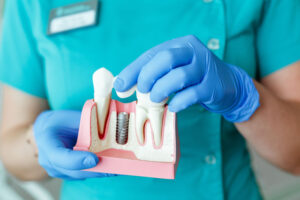Dental implants have revolutionized restorative dentistry, offering a permanent, functional, and natural-looking solution for replacing missing or damaged teeth. Unlike traditional dentures or bridges, implants preserve jawbone health, enhance chewing function, and provide a durable, aesthetically pleasing restoration. A complete dental implant consists of three essential components: the implant screw, which fuses with the jawbone; the abutment, which connects the implant to the crown; and the dental crown, which replicates the appearance of a natural tooth. Among these components, the abutment on implant plays a crucial role in ensuring stability and success.
The abutment acts as the intermediary piece that securely links the implant screw to the final crown. Once the implant post has integrated with the jawbone through osseointegration, the abutment is carefully attached to provide a stable foundation for the crown. This small yet vital component, made from durable titanium or ceramic materials, extends slightly above the gum line, ensuring long-term functionality and seamless aesthetics. Proper selection and placement of the abutment significantly influence the comfort, stability, and longevity of the implant.
Why Abutment Selection and Placement Matter
Choosing the right abutment for an implant is essential for ensuring a secure and natural fit. The abutment directly impacts how the crown aligns with the surrounding teeth, influencing both function and appearance. A well-fitted abutment evenly distributes bite pressure, reducing stress on the implant and surrounding teeth. If improperly positioned, the implant may feel uncomfortable, cause gum irritation, or even lead to failure over time.
Beyond stability, abutments contribute to the overall aesthetics of the final restoration. A custom-fitted abutment ensures that the crown aligns perfectly with the natural gum line, creating a seamless and realistic appearance. For front tooth restorations, careful abutment selection is particularly important, as it directly affects the natural emergence profile of the artificial tooth. By working with an experienced implant specialist, patients can achieve optimal comfort, functionality, and a beautiful, natural smile.
Types of Abutments and Their Benefits
Not all abutments are the same—choosing the right type is critical for achieving the best possible results. Custom abutments are individually designed to perfectly fit the patient’s dental anatomy, offering superior comfort, function, and aesthetics. These are ideal for highly visible teeth, where precision and natural appearance are top priorities. Custom abutments also provide better gum contouring, enhancing the seamless integration of the crown with the surrounding soft tissue.
On the other hand, stock abutments are pre-fabricated in standardized shapes and sizes, providing a cost-effective solution for less complex restorations. While they may not offer the precise fit of custom abutments, they are commonly used for back teeth, where function takes precedence over aesthetics. The material of the abutment is equally important—titanium abutments are widely used due to their exceptional strength and biocompatibility, while zirconia abutments provide a tooth-colored alternative that enhances the appearance of implants in visible areas.
Ensuring Long-Term Success with Proper Aftercare and Maintenance
The success of a dental implant extends beyond the surgical procedure—proper care and ongoing maintenance are essential for ensuring long-term functionality. After the abutment and crown are placed, maintaining excellent oral hygiene is critical to prevent infections and implant complications. Patients should brush twice daily with a soft-bristle toothbrush, floss carefully around the implant, and use an antibacterial mouth rinse to reduce the risk of peri-implantitis, a condition that causes gum inflammation and bone loss around the implant.
Regular dental check-ups allow professionals to monitor implant stability, ensure the abutment remains securely in place, and detect early signs of potential issues. Additionally, avoiding habits such as chewing on hard objects, grinding teeth, and smoking will help protect the implant from unnecessary stress and damage. By following these preventative measures and scheduling routine dental visits, patients can enjoy a long-lasting, functional, and aesthetically pleasing dental implant for years to come.
Are you ready to restore your smile with dental implants at our skilled and trusted dental practice? Don’t wait to get the smile of your dreams with us. Get in contact with our doctor, Dr. Dave Dodrill and our exceptional team at our practice to schedule an appointment today!




